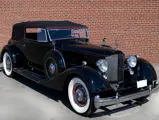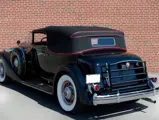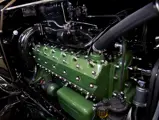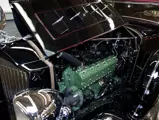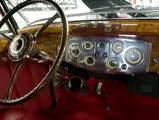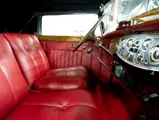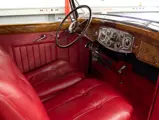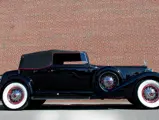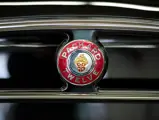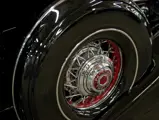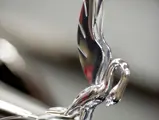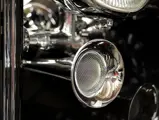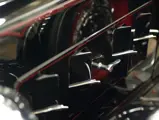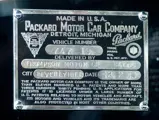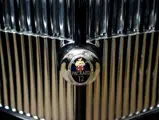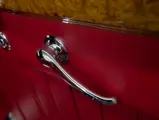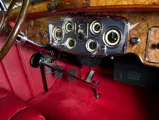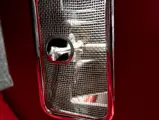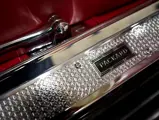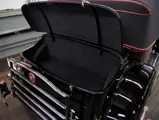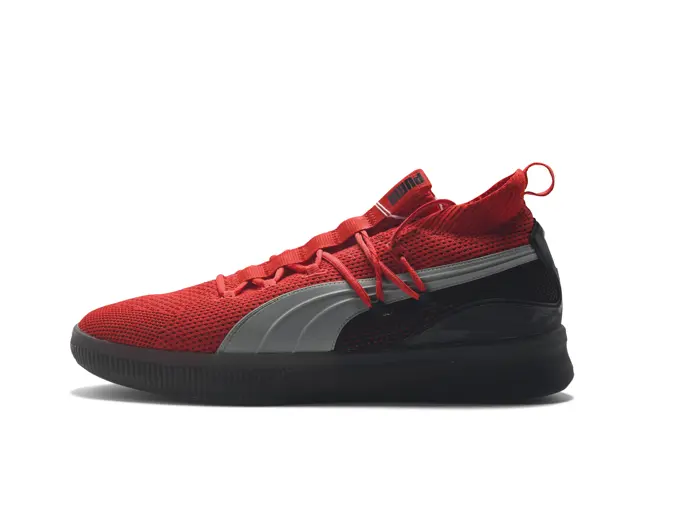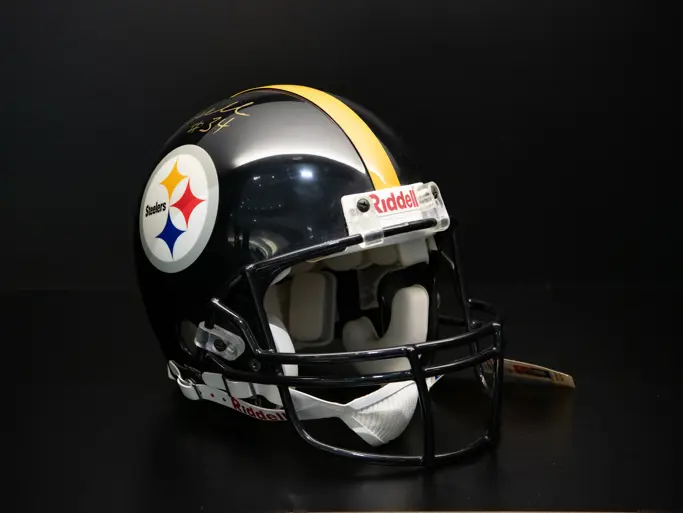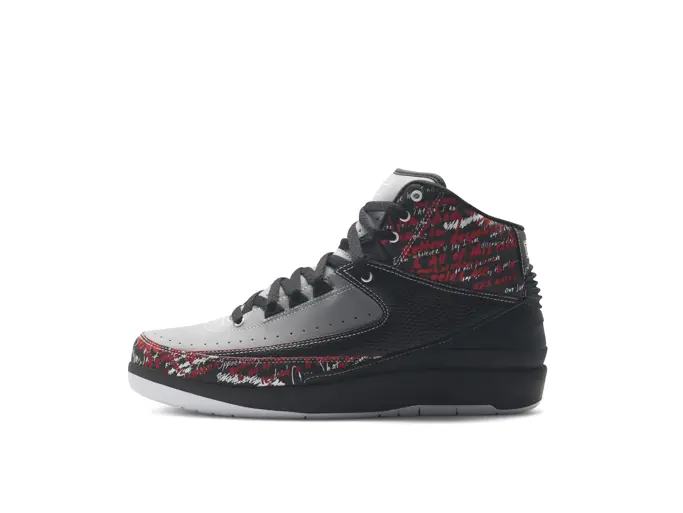Monterey 2011
1934 Packard Twelve Convertible Victoria by Dietrich
{{lr.item.text}}
$440,000 USD | Sold
 | Monterey, California
| Monterey, California
{{internetCurrentBid}}
{{internetTimeLeft}}

160 hp, 445.5 cubic inch V-12 engine, three-speed manual synchromesh transmission, front and rear semi-elliptic leaf springs, rear live axle, four-wheel, vacuum-assisted mechanical drum brakes. Wheelbase: 147"
- Bought new in Beverly Hills by movie actor Cesar Romero, “The Cisco Kid”
- Lifelong California ownership, with one owner for almost 60 years
- Pebble Beach award winner in 1955 and 2008
- Superb, professional restoration
The resurgence of multi-cylinder fever in the early 1930s, with enormous Cadillac and Marmon V-16s and Pierce-Arrow and Cadillac and Lincoln V-12s, prompted Packard to reintroduce a 445.5 cubic inch, 160 hp V-12 in 1932. Generating almost double the horsepower of the old V-12, it was billed as the Twin Six for the first year and then became famous as “The Twelve,” built until 1939 – perhaps the finest American car of the decade.
Designed by C.W. van Ranst, who had worked for Harry Miller and E.L. Cord, the engine was remarkably smooth, and with 322 foot-pounds of torque, it could propel enormous coach-built sedans and limousines to 60 mph in only 20 seconds.
The 67-degree engine was a modified L configuration, with valve stems almost horizontal and operated by a camshaft deep in the engine’s heads through roller rockers on hydraulically adjusted eccentrics. The result was almost completely silent.
Packard had concentrated on mechanical sophistication almost entirely through the 1920s, but style began to play a part in the 1930s, with a web of relationships. Most bodies emanated from LeBaron and the Murray Body Corporation, but while Edward Macauley headed Packard’s in-house styling department, along with Alex de Sakhnoffsky, Raymond Dietrich was the most influential figure. The influence of his 1929 Model 645 Deluxe Eight was still being felt in 1934.
The car on offer today is a Dietrich-designed, five-place Victoria, a body style named after a horse-drawn carriage, which featured fitted side-windows and an expansive blind C-pillar. Preferred by owner-drivers, the Victoria could be closed in inclement weather, or the top could be lowered into a well behind the doors for a sleek open look when the sun came out.
The 1934 Packards were subtly modernized from the preceding year, with front fenders that now curved down almost to the front bumpers, which were wider, with stabilizing dampers fitted to the Twelves. Other changes involved trunks now integrated into the closed car bodies, higher seat backs and more luxurious upholstery, motor oil cooled by circulation through a core surrounded by radiator water, and an oil filter. The dealers were delighted. T.E. Byrne of Packard-Indianapolis observed the new car “actually performed so smoothly and quietly that I could almost hear my watch tick at 60 miles an hour.”
Also new for 1934 was the first Packard radio option, neatly integrated into the elegant new dashboard. Packard had tinkered with radios since 1929, when noted Los Angeles Packard dealer Earle C. Anthony led a delegation to talk to radio companies. As a result, 50 owners had radios installed in 1929, though no factory-approved radios were sold until 1932. By 1934, Packard had re-engineered its cars with shielded wiring, changes in coils to prevent interference, a larger air-cooled generator and a radio head integrated into the dashboard design. This car has that radio option.
The first owner of this particular Packard was movie star Cesar Romero, who played The Cisco Kid in six Hollywood movies. He bought the convertible from Thompson Motors in Beverly Hills in late 1933. Romero made over 100 movies in his career but may be best remembered now for playing The Joker in the 1960s Batman TV show. Romero later sold the Packard to sportscaster Bill Stern, who also has a star on the Hollywood Walk of Fame, for broadcasting the first Major League Baseball game on television in 1939.
After World War II the Victoria was frequently seen driving around the Stanford University stadium track during football game pep rallies. Fortunately, San Francisco policeman Marvin Zukor was able to buy the Packard from a young enthusiast who had rescued it from Stanford, then was drafted and sent to Korea. Zukor was a founder of the Northern California Region of the Classic Car Club of America and would own the Packard for almost 60 years. By 1955, it had received a paint job and new upholstery, the engine was rebuilt, and Zukor drove it to the sixth Pebble Beach Concours d’Elegance, where he scored second place in the Packard Class.
Zukor and his wife drove the Packard regularly for the next 50 years, and the car now indicates 82,000 miles. An invitation to return to Pebble Beach in 2008 by old friend Chris Bock, who was on the concours selection committee, prompted Zukor to commission a ground-up restoration by Craig Lynch of Cooks Upholstery and Classic Restoration in Redwood City, California.
The Victoria was completely disassembled, mechanically rebuilt, repainted, re-plated and reupholstered, at great expense to the owner. Satisfyingly, in its first appearance at the 2007 Palo Alto Concours, the Packard won the Meguiar’s Award for best exterior paint finish for its shining black coat and red pinstripes.
In 2008 Zukor and his wife reprised their Pebble Beach trip of 53 years before and again earned a class award at the Pebble Beach Concours d’Elegance. To loud applause, announcer Paul Woudenberg told the story of the car’s return, as the couple crossed the ramp to receive their trophy. The Packard followed up this honor with a best in class at the inaugural Marin Sonoma Concours in 2009. Indeed, the car continues to present very well. The restoration still appears very fresh, and every detail, from the engine bay to the chassis, can best be described as spectacular.
As classic cars take their place among other respected antiques, prospective buyers know that nothing can compensate for thorough and complete provenance. The Zukor Packard has that provenance: from a star-studded beginning to long-term care in the hands of an enthusiast who knew he had a classic car, long before most people even knew what one was. What’s more, it is an award-winning example with superb, professional restoration work to its credit, and as such it warrants very close attention from Packard enthusiasts.

